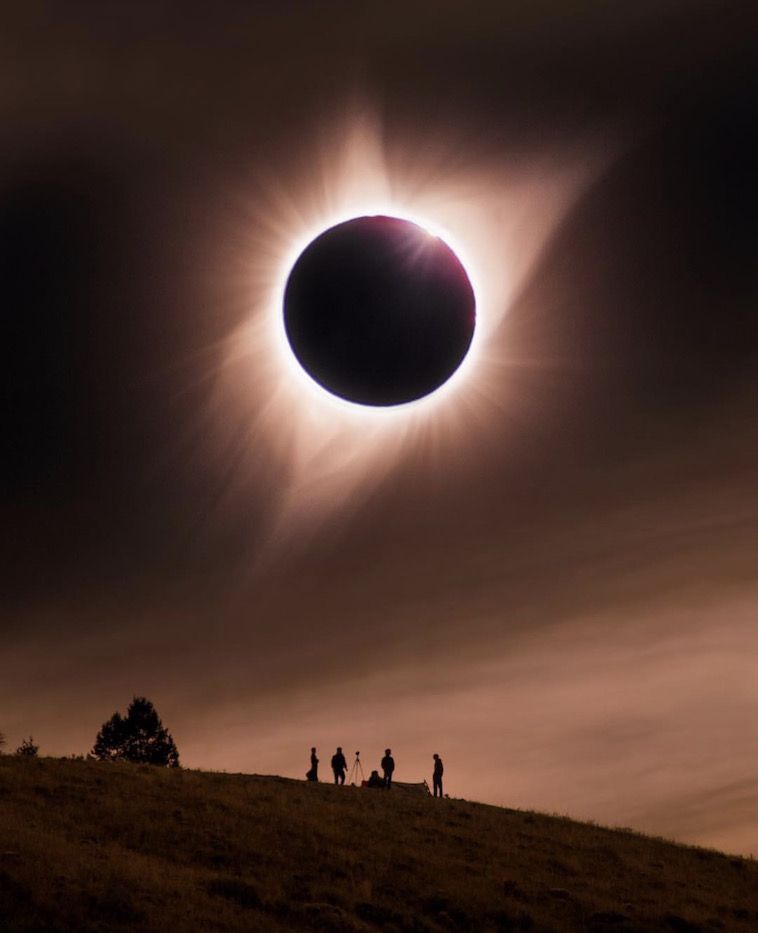image source: https://www.pinterest.com
Are you ready to experience the breathtaking phenomenon of a solar eclipse? Learning how to look at the eclipse safely is crucial for enjoying this rare event. In this guide, we will discuss the dos and don’ts of eclipse viewing so you can fully immerse yourself in this awe-inspiring sight without any harm to your eyes. So get ready to witness nature’s spectacular show and read on to discover the proper way to look at the eclipse.
Mastering the Eclipse: A Guide on How to Safely Observe the Solar Phenomenon
Introduction
The eclipse is a rare and mesmerizing phenomenon that occurs when the moon passes between the sun and the Earth, casting a shadow on the Earth’s surface. It is a natural event that has fascinated humans for centuries, and many people travel far and wide to witness this spectacular sight. However, observing the eclipse can be dangerous if not done properly. In this guide, we will discuss the necessary precautions and techniques to safely observe the eclipse.
Precautions to Take Before Observing the Eclipse
Before we dive into the techniques of observing the eclipse, it is essential to understand the potential risks involved. Looking directly at the sun, even during an eclipse, can cause permanent damage to your eyes. The sun’s intense rays can burn the delicate tissues of the eyes, leading to blindness. Therefore, it is crucial to take necessary precautions to protect your eyes while observing the eclipse.
The most important precaution is to never look directly at the sun without proper protection, even during a partial eclipse. The only time it is safe to look at the sun is during a total eclipse when the moon completely covers the sun. This usually only lasts for a few minutes, and it is important to prepare beforehand to make sure you do not miss this brief window.
Another precaution is to never use regular sunglasses or homemade filters to view the eclipse. These do not provide enough protection from the sun’s harmful rays and can cause severe damage to your eyes. Instead, invest in a pair of certified solar eclipse glasses or specialized solar filters for your binoculars or telescope.
Techniques for Observing the Eclipse
Now that you are aware of the precautions, let us discuss the various techniques for safely observing the eclipse.
1. Solar Eclipse Glasses
The most common and safest way to view an eclipse is through solar eclipse glasses. These glasses have specialized filters that block out most of the sun’s harmful rays, allowing you to view the eclipse without damaging your eyes. Make sure to purchase glasses that are certified by the International Organization for Standardization (ISO) to ensure their safety.
2. Pinhole Projection
Another simple and safe technique to observe the eclipse is through pinhole projection. To do this, you will need a piece of cardboard, a pin, and a white sheet of paper. Make a small hole in the cardboard using the pin and hold it up towards the sun, allowing the sun’s rays to pass through the hole and project an image onto the white paper. This will create a small, inverted image of the sun, allowing you to observe the eclipse indirectly.
3. Telescopes and Binoculars
If you plan on using a telescope or binoculars to view the eclipse, it is crucial to use proper solar filters. Regular filters or lenses are not safe for viewing the sun and can cause damage to your eyes. Invest in specialized solar filters or a solar filter sheet that can be cut to fit your equipment.
4. Live Stream
If you are unable to obtain proper equipment or do not want to risk damaging your eyes, consider watching the eclipse through a live stream. Many reputable sources, such as NASA, provide live streams of the eclipse, allowing you to experience it safely from the comfort of your own home.
Conclusion
In conclusion, observing the eclipse can be a breathtaking experience, but it is crucial to take the necessary precautions to protect your eyes. Never look directly at the sun without proper protection, and invest in certified solar eclipse glasses or specialized filters for your equipment. If you areIn conclusion, learning how to look at the eclipse safely is crucial for protecting your eyes and fully experiencing this rare celestial event. By following the proper precautions and using the right equipment, you can safely enjoy the awe-inspiring beauty of the eclipse without risking any eye damage. So remember, always prioritize safety first and enjoy the eclipse responsibly.
Reference
- I looked at the eclipse and now my eyes hurt. What are the symptoms of eclipse blindness?, https://eu.usatoday.com/story/news/2024/04/08/eclipse-blindness-symptoms-eye-damage/73242182007/
- Total solar eclipse 2024: Live updates during the once-in-a-generation celestial event, https://eu.freep.com/story/news/local/michigan/2024/04/08/solar-eclipse-2024-live/73230261007/
- Why do you need eclipse glasses? So you don’t go blind. What happens if you look at the sun, https://eu.usatoday.com/story/entertainment/life/2024/04/08/why-do-you-need-eclipse-glasses/73245608007/
